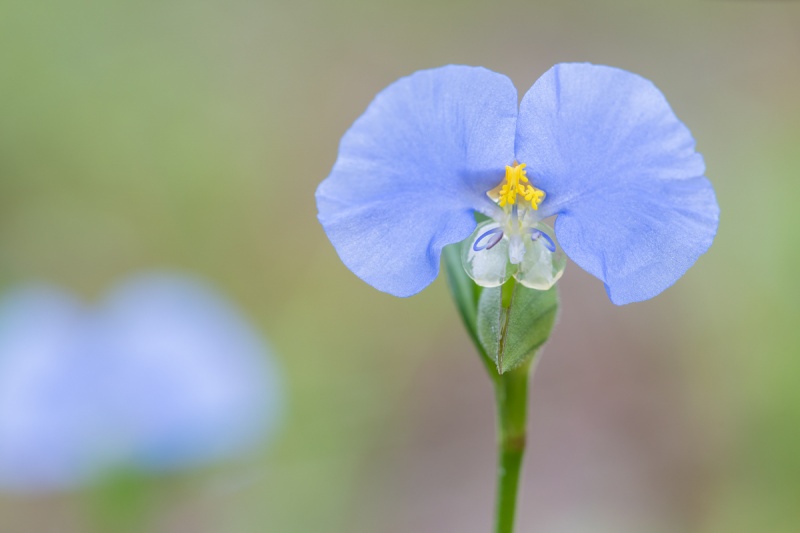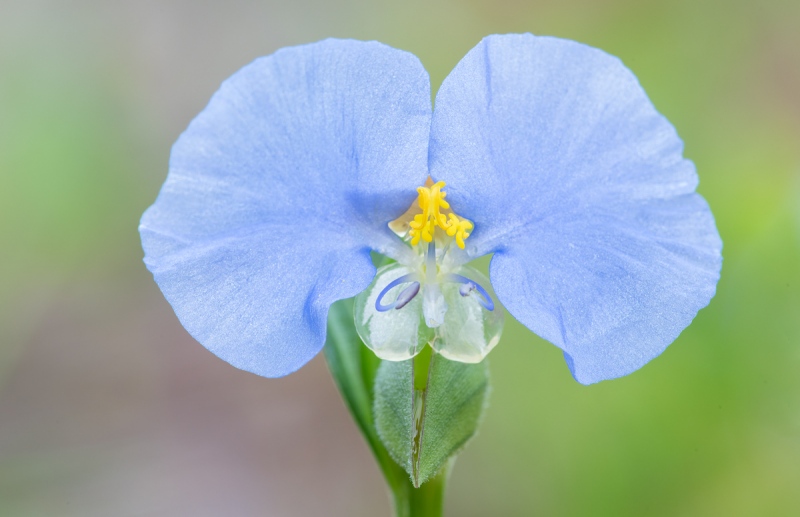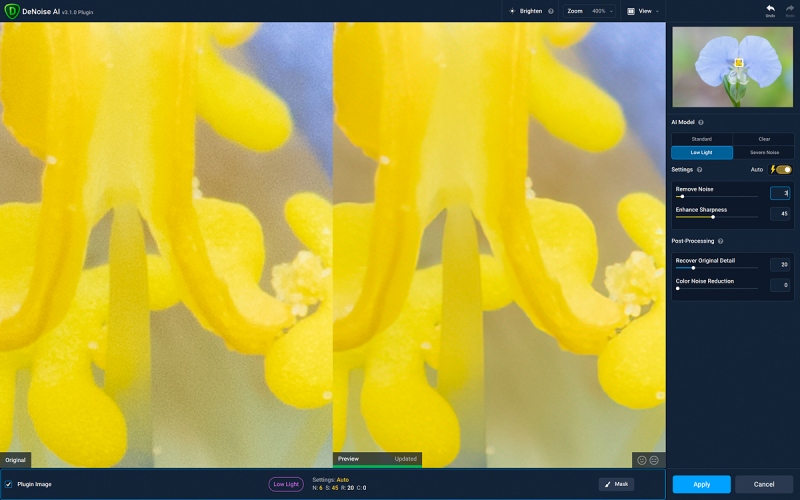Your Favorite?
Please leave a comment letting us know which of today’s two featured images you like best, and why you made your choice.
What’s Up?
I took another morning off from photography on Friday; I got lots of work done, but don’t ask me what I got accomplished. Since my 75th birthday 10 days ago, I have rededicated myself to being more active. I had been doing my bursts and swimming a half-mile most every day. I’ve added a 1 1/2 mile walk and have gotten back to doing the Dr. Eric Goodman Founder Exercises (12 minutes here). If you, like most of us (including and especially me), have been living in the box for several decades — sitting, on the computer, sitting, driving, sitting — you know the drill, you might want to learn a bit more about Eric Goodman here.
My favorite-by-far Anita North African image is #4: Yellow-billed Storks Allopreening. Next up for me would be Image #1: Elephant Contortions. Followed by several others including Image #3: Weaver at Nest, Image #7: Newborn Wildebeest Calf With Mother, and Image #8: Cape Buffalo Adults/Calf Juxtaposition. And several others are not bad either!
Today is Saturday 25 June 2021 and I will likely be staying in to get ready for my trip to Jacksonville tomorrow for the Mini-IPT. Wherever you are, and whatever you are doing, I hope that you too have a great day.
This blog post took about an hour to prepare and makes 182 consecutive days with a new one. Please remember that if an item — a Delkin flash card, or a tripod head — for example, that is available from B&H and/or Bedfords and is also available in the BAA Online Store, it would be great if you opt to purchase from us. We will match any price. Please remember also to use my B&H affiliate links or to save 3% at Bedfords by using the BIRDSASART discount code at checkout. Doing either often earns you free guides and/or discounts. And doing so always earns my great appreciation.
Please Remember
With income from IPTs now close to zero, please, if you enjoy and learn from the blog, remember to use one of my two affiliate programs when purchasing new gear. Doing so just might make it possible for me to avoid having to try to get a job as a Walmart greeter and will not cost you a single penny more. And if you use Bedfords and remember to enter the BIRDSASART code at checkout, you will save 3% on every order and enjoy free second-day air shipping. In these crazy times — I am out at least forty to sixty thousand dollars so far due to COVID 19 (with lots more to come) — remembering to use my B&H link or to shop at Bedfords will help me out a ton and be greatly appreciated. Overseas folks who cannot order from the US because of import fees, duties, and taxes, are invited to help out by clicking here to leave a blog thank you gift if they see fit.
New and Better Bedfords Discount Policy!
You can now save 3% on all of your Bedfords photo gear purchases by entering the BIRDSASART coupon code at checkout. Your discount will be applied to your pre-tax total. In addition, by using the code you will get 2nd day air shipping via Fed Ex.
Grab a Nikon AF-S Teleconverter TC-14E III and save $14.99. Purchase a Canon EOS R5 and your discount will be $116.97. Purchase a Sony FE 600mm f/4 GM OSS lens and save a remarkable $389.94! Your Bedford’s purchase no longer needs to be greater than $1,000.00 for you to receive a discount. The more you spend, the more you save.
Money Saving Reminder
Many have learned that if you need a hot photo item that is out of stock at B&H and would enjoy free second-day air shipping, your best bet is to click here, place an order with Bedfords, and enter the coupon code BIRDSASART at checkout. If an item is out of stock, contact Steve Elkins via e-mail or on his cell phone at (479) 381-2592 (Central time). Be sure to mention the BIRDSASART coupon code and use it for your online order to save 3% and enjoy free 2nd-day air shipping. Steve has been great at getting folks the hot items that are out of stock at B&H and everywhere else. The wait lists at the big stores can be a year or longer for the hard to get items. Steve will surely get you your gear long before that. For the past year, he has been helping BAA Blog folks get their hands on items like the SONY a9 ii, the SONY 200-600 G OSS lens, the Canon EOS R5, the Canon RF 100-500mm lens, and the Nikon 500mm PF. Steve is personable, helpful, and eager to please.


Gear Questions and Advice
Too many folks attending BAA IPTs (remember those?) and dozens of photographers whom I see in the field and on BPN, are–out of ignorance–using the wrong gear especially when it comes to tripods and more especially, tripod heads… Please know that I am always glad to answer your gear questions via e-mail
|
|
|
This image was created on 23 June 2021 on my (rarely-mown) front lawn. Working off the splayed Induro GIT 304L topped by a Levered-Clamp FlexShooter Mini, I used the Canon EF 180mm f/3.5L Macro USM lens with the Metabones Canon EF/EF-S Lens to Sony E Mount T Smart Adapter (Fifth Generation) and The One, the Sony Alpha 1 Mirrorless Digital camera body. ISO 800. The exposure was determined by Zebras with ISO on the rear wheel: 1/60 sec. at f/9 (stopped down 2 2/3 stops) in Manual mode. RawDigger showed this exposure to be dead-solid perfect. Manual Focus with Focus Magnifier and Focus Peaking as detailed in the SONY Alpha a1 Info and Updates group e-mails. AWB at 8:33 in the shade on a partly sunny morning. Click on the image to enjoy a larger version. Image #1: Small-in-the-frame White-mouth Dayflower — Commelina erecta |
Commelina erecta
This flower is not hard to find in Central Florida. It is known as White-mouth Dayflower, Slender Dayflower, or Widow’s Tears. I am blessed to have them blooming profusely in my yard in late spring and early summer each year. Until doing a bit of research for this blog post, I never realized that the flowers in my yard bloom for only one day. Each low-growing plant, however, produces a succession of flowers that keep them blooming for many weeks.
Depth-of-Field Question
Why does Image #1 (made at f/9), have as much d-o-f then Image #2 (made at f/16)?
|
|
|
This image was created on 23 June 2021 on my (rarely-mown) front lawn. Working off the splayed Induro GIT 304L topped by a Levered-Clamp FlexShooter Mini, I used the Canon EF 180mm f/3.5L Macro USM lens with the Metabones Canon EF/EF-S Lens to Sony E Mount T Smart Adapter (Fifth Generation) and The One, the Sony Alpha 1 Mirrorless Digital camera body. ISO 800. The exposure was determined by Zebras with ISO on the rear wheel: 1/15 sec. at f/16 (stopped down 4 1/3 stops) in Manual mode. RawDigger showed this exposure to be dead-solid perfect. AWB at 8:36 in the shade on a partly sunny morning. Manual Focus with Focus Magnifier and Focus Peaking as detailed in the SONY Alpha a1 Info and Updates group e-mails. Click on the image to enjoy a larger version. Image #2: Large-in-the-frame White-mouth Dayflower — Commelina erecta |
Manual Focus with Focus Magnifier and Focus Peaking
All of the high-end SONY mirrorless camera bodies offer these features. If you do macro, using them properly in combination, is both efficient and fun. After activating Focus Magnifier (as detailed in SONY Alpha a1 Set-up and Info Notes #16), you frame the shot — always working on a tripod. While focusing manually, the areas or sharp focus will be overlaid by the peaking color of your choice. As you turn the focusing ring, you will see the focus peaking move from front to back or back to front across the image. Then you can magnify the image in two steps to ensure critically sharp focus exactly where you want it.
SONY Alpha a1 Set-up and Info Group
The SONY Alpha a1 Set-up and Info Group is going great guns as more and more folks chime in with thoughtful questions and experience-based answers. As the a1 is becoming more readily available, more and more folks are getting their hands on this amazing body. With two folks joining yesterday, we are now up to an astounding 62 blessed photographers! Early on, we discussed the myriad AF options. I gave my opinion as to the best one for flight and general bird photography. More recently, we have been in contact with folks at SONY sharing our thoughts, experiences, and frustrations with the EVF blackout problem.
All who purchased their Alpha a1 bodies via a BAA affiliate link will receive a free subscription to the Sony Alpha a1 Set-Up and Info Updates after shooting me their receipts via e-mail. (Note: it may take me several days to confirm B&H orders.) This same service may be purchased by anyone with an a1 body via a $150.00 PayPal sent to birdsasart@verizon.net indicating payment for Alpha a1 Info Updates. Alternatively, folks can call Jim weekdays at 1-863-692-0906 to pay via credit card. New members will receive composite e-mails that summarize all previous discussions.
|
|
Image #2A: Topaz DeNoise on the Large-in-the-frame White-mouth Dayflower — Commelina erecta |
Topaz DeNoise
Be sure to click on the screen capture to see the complete elimination of noise in the after image on our right. And note that if anything, the fine details are sharper than in the original.
As regular readers know, I run DeNoise on virtually every image that I process immediately after executing the crop with the Delete Cropped Pixels box checked. For images made in sunny conditions, I used Standard. For images made in low light, I use Low Light. You can check all four methods by using the Comparison View but I rarely do that any more as I am confident as noted above.
Great Topaz News!
Folks who use the BAA Topaz link to purchase Sharpen AI, DeNoise AI, or the Utility Bundle (or any other Topaz plug-ins), will receive a 15% discount by entering the ARTHUR15 code at checkout. If the stuff is on sale (as it usually is), you save 15% off of the sale price! To get the discount you must use my link and you must enter the discount code. Be sure to start with this link.
Those who purchase Sharpen AI, DeNoise AI, or any other Topaz plug-ins using my link and then entering the ARTHUR15 code at checkout can e-mail to request a short Getting Started with Topaz e-Guide. Please include a copy of your Topaz receipt that shows the discount. Aside from the basics, the guide explains how to install the plug-ins so that they appear in the Photoshop Filter Menu.
Typos
With all blog posts, feel free to e-mail or to leave a comment regarding any typos or errors.


















In macro work the lens is typically quite close to the subject. If the lens to subject distance is 12 inches for the 180mm macro lens, then the depth of field is a paltry 1/32 inch, for an aperture of f/9 and f/16. The depth of field does change and is greater for a smaller aperture, i.e. f/16 vs f/9, but the difference is measured in microns, which would hardly be noticeable in this subject.
Thanks, Dane. The distance is measured from the plane of the sensor to the flower. I’d estimate that as about 20 inches for this flower shot. The total d-o-f with a full frame body at f/9 is about 1/10 of an inch and that just about doubles at f/16 to almost 2/10 of an inch. So not microns.
with love, artie
Art: Knowing me so well, you know I’m going to say #2. I find the blurry blooms in #1 to be distracting.
I prefer image#1 because it tells a story — “Here’s a pretty flower that lives among others of it’s kind.” The sharp focus isolates the subject and the blurred background gives context to the image, without being distracting.
Image #2 says, “This is a white-mouth dayflower.” It would be great illustrating a textbook on white-mouth dayflowers, but it doesn’t tell me a story about them.
I agree with Joel Eade. If those were my images I would have cropped image 1 in portrait orientation to get the extra length of stem but crop out the (to me) distracting blue blob, I assume an oof day flower, on the left.
My guess to your question is the distance from the subject ….. as the subject distance increases so does the depth of field at any given aperture.